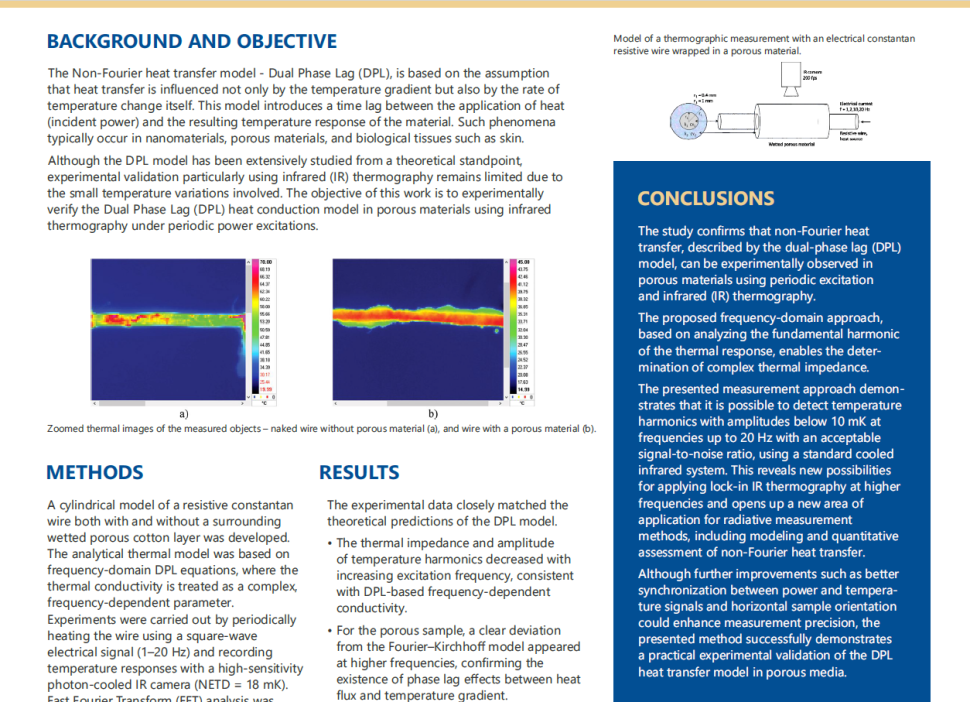We are pleased to recommend the latest article by our colleagues - Dr. Maria Strąkowska and Prof. Bogusław Więcek, together with Prof. Gilbert De Mey from the Department of Electronics and Information Systems, University of Ghent (Belgium).
In their work, the authors present experimental evidence of non-Fourier heat transfer in porous materials — a phenomenon that plays an increasingly important role in fields such as electronics, materials science, and biomedical engineering.
The classical Fourier model does not fully explain certain dynamic effects. For this reason, the study employs the Dual Phase Lag (DPL) model and verifies it experimentally using:
📌 periodic electrical excitations,
📌 infrared (IR) thermography,
📌 frequency-domain signal analysis (FFT).
The experiments - conducted, among others, on a resistive wire covered with moistened cotton - show that the thermal conductivity of porous materials is frequency-dependent, and that the DPL model describes the observed temporal effects significantly better than the traditional Fourier approach.
🔬 The results are highly relevant for the development of:
✔️ advanced thermal modelling in electronics,
✔️ design of new porous materials,
✔️ IR thermography–based diagnostic techniques,
✔️ research on dynamic heat transport processes.
✒️ We encourage you to read the full article, which explains how combining experimentation, modelling, and modern measurement techniques enables the exploration of complex physical phenomena:
M. Strąkowska, , G. De Mey, B. Więcek, "Non-Fourier heat transfer in porous material with experiment using periodic power excitations and IR thermography". Quantitative InfraRed Thermography Journal, 2025, 1–16. https://doi.org/10.1080/17686733.2025.2572872
